News and Articles › Philosophy show-home
The Renaissance was the intellectual result of Aristotle’s philosophy, which in effect destroyed the Middle Ages.
— Ayn Rand, philosopher
Top list
View the entire list
A student of mine met an old art collector at an art fair. They exchanged a few words and the collector agreed to visit the young man’s studio. The old collector struggled up all the stairs to the young painter’s loft studio, but was at last at the doorstep.
The painter bid him humbly welcome, and, with heavy breath, the collector entered the studio.
Those old looking pictures… Is that what you wanted to show me? He asked.
Yes…, replied the proud young painter.
But this is not art… have you fooled me all the way up here to see those dark paintings… those sad faces?
The painter stood silent, shocked.
Don’t you trick people like that, said the collector before leaving.
The old man was fooled, but by whom?
Most people are of the opinion that the French artist Paul Cezanne found everything in himself. But what is “oneself?” Cezanne’s notorious color palette: 40 pure and unmixed colors. In a painting, the depiction of a shoelace was to have as much importance as the human eye.
Where did these ideas come from?
Who instructed the modern artist to paint like a child?1
After mediocre attempts to create baroque pictures, Cezanne read the philosopher Immanuel Kant’s (1724-1804) The Critique of Judgment and became an illustrator of Kant’s rules of art.
In the Critique of Judgment, Kant searched for truth in the beauty of art. A silent beauty, with no reference to anything,2 was the ideal for him. And art’s creator, a genius with a big G, possessed a gift with no references from this world.3
Goethe advised all artists to read “The Critique of Judgment”4
According to Kant:
- The genius never uses a borrowed form; technique therefore cannot be utilized.5
- The genius fumbles to something no one has seen before.6
- The genius is the example of beauty; all other artists must be judged according to this genius.7
- The genius operates with the same habits of living as previous geniuses. So if, for example, you were a composer studying Beethoven, you would not imitate his music, but his coffee habits.8
- And at last, the Genius should not blend colors, because each individual color would then get dirty.9
Half a century prior to Cezanne, Madame De Stäel was on a trip to Berlin, and came back in excitement; the country of great thinking: L’Allemagne.
The cultural life of France is enlightened by the thoughts of German idealists, such as G. Friedrich Hegel (1770-1831), who writes in his Aesthetics that classicism’s imitational form is not good enough.
– Spirit must find its greatness in itself10
But his “great” idea was his claim that works of art are product of the times.11
However, should he disrespect this law by attempting to write a Shakespearian play in the 21st century, then Hegel’s doctrine would command the art to be nonvalid.12 These are Hegel’s actual words.
By following Hegel’s idea, you don’t have to be good, but new.
During the Romantic era, the Germans began to develop the idea that they were the true culture bearers of the world. A new religion.
It was also the philosophy of this time which made Art, or as it is called nowadays: modernism.
Since its birth in the 18th century, Art had developed more a concern for theological commands and less for philosophy.
To understand the basis of the idea behind abstract art, witness the philosophy of Immanuel Kant.
For pop art, witness the philosophy of Hegel.
The German philosophy was to become decisive for the 20th century, but hardly any artists knew about its origins after a while – It simply “came to them,” as they say.
With time the understanding of Hegel’s Aesthetic philosophy was simplified and popular interpretations circulated widely. Here are some of them:
- When a piece of work is not new, it is without value.
- That an artist that can lead the way into the future.
- That he is ahead of his time.
- That an artist always renews himself.
- While Kant talks about the self that feels, Hegel talks about the individual’s place in society.13 These thoughts represent an illogical mixture. You cannot be yourself and at the same time be a follower of your time.
The truth is that our time has, since the world wars of the previous century, remained in silence about the philosophical origin of the term art.
Kant and Hegel’s influence on the world has been great, and considerably more important than the ideas of Marx and Freud.
Ayn Rand described Kant on one occasion as “The real villain of our age.”14
The universities in Europe: History of Art – Sociology – History of Ideas – Philosophy – History – Psychology – all the so called half meta-physical subjects are entirely in the spirit of Immanuel Kant. People on the street talk in Kant’s spirit, everyone does.
It is difficult to imagine a world unlike the Western world, in which many of us are born into.
But there did exist a culture prior to the germanification of the West in the 19th and 20th century, and this world was crowned with poetry.
The ancient Greek culture is the greatest miracle achieved on earth in human history as we know it.
Consider the sculptors, for example, where an average artisan was a Da Vinci.
Aristotle gives a report of the antique painter, who mingled colors of white, black, yellow and red, in order to achieve harmony in his work.15 We know that the ancient Greek painter Apelles used this palette,16 and the four color technique has been inherited by painters such as Velasquez, Rembrandt, Titian and Zorn.
Painters from antiquity were magicians in their own time, but what did the Greeks feel about time? There was no spiritual idea of doomsday, they experienced seasons and respected their gods who protected them with wisdom.
The culture of antiquity is the heritage of Europe – we can call it the expressive baroque. Is this what the German philosophers reacted to, the goal of an objective standard, the classical body captured in movement?
By Christian fate, “Limbo” is a dwelling for people born prior to Jesus Christ. In Limbo, we find the dead Plato floating around in conversation with Abraham and Isaac. Only after the birth of Christ we are ready to see Paradise, that is, if we follow the preaching of Jesus. If we do not, the destination is Hell.
Jesus Christ’s position in Medieval Rome is not so different from that of Immanuel Kant’s in recent history.
Had Diego Velasquez worked and lived, not before, but 100 years after Kant’s Critique of Judgment – then Velasquez would be designated to kitsch.
After 1000 years of Iconoclastic Christendom, from the fall of Rome to the end of the Middle Ages, the classicism of the ancient times was resurrected.
Now, we are living with art, a concept which is a little more than 200 years old.
If the art police get it their way, art will remain in dominance, perhaps for another 800 years.
Is that what you all want?
Now back to the old collector.
By condemning the works of the loft studio painter as old-fashioned, he simply followed the foundational ideas of Kant and Hegel about what art should and should not be. Art, for the collector, was what we call “modernism”, and the notion that art is a modern phenomenon rooted in autonomy and mysticism, is correct. Classicism never had anything to do with art in the first place, but came down to the Renaissance through Aristotle’s philosophy and the aesthetics of antiquity.
The question remaining is: who advised the collector?
The art historians are almost always the rich people’s adviser and they have gained the position as the magistrates of aesthetics.
Immanuel Kant said that a man independent of the thing in question should appoint the genius.17 But does the art historian possess more knowledge of composition and rendering of skin, than a painter?
Since the art-historian came to be a foot-soldier for the Kant-Hegel mysticism, great talents were overlooked, and the rise to success developed into a game of lottery. All preceding knowledge has been dismissed in the German philosophy of the Romantic era.
The one to blame is not the artist. He is just a potato that should be mashed. The one to blame is the art-historian. With a few exceptions, they are all occupied by the German philosophy – and they are its soldiers.
The art critics decide everything at the museums, they decide for the collectors, the buyers … they are Government counselors, and their power is damaging.
Immanuel Kant said that the critic must be a person that lacks knowledge about the work he is considering,18 and he adds that the critique should not be aimed at cleverness or technique, but genius, pure and untouched genius.19
In the West, everyone is educated in the same way – those unwilling to follow the doctrine, fall out of the good company, become unemployed and loose legitimacy.
Modernism, as a standard of quality, has upheld its power through government funding for more than 100 years. Washing ladies may complain all they like, but the university intellectuals keep on smiling:
In a letter to Alma Mahler in 1914, composer Arnold Schönberg denounced the music of Bizet, Ravel and Stravinsky:
Now we will throw these mediocre kitschmongers into slavery and teach them to venerate the German spirit and to worship the German God.
Witness thus the idea of modernism at its height in the early 20th century.
Two years later, Vincent Van Gogh was described as “the German spirit’s battle against the classical form.”20
Modernism is based on a philosophy developed by two thinkers, a philosophy of commandments.
I know how to rid us of this monopoly – and let dialogue revive in this combat zone of consensus tyranny.
I have heard that the Romans arranged two hospital divisions because of wounded gladiators:
- One building for surgical operations.
- One building for epidemics.
The aim of dividing these two was to avoid contact between the two premises in order to attain successful surgery – a mix of surgeons and epidemics would be very dangerous.
Because of this division, many gladiators were healed and could re-enter the arena as heroes once more.
Surgeons know what toes are, how the lung works and what our heads consist of. The parts of our body remain constant at all times, from the rib cage of Achilles, to the rib cage of the modern man.
The department of epidemics, however, is ephemeral. One day’s Syphilis is the next day’s Aids, Ebola, and so on.
One might call it an art of seasons, almost like clothes in the fashion industry.
Few, or none, can know for sure when a new disease might strike.
The Romans seem to have understood that the distance between these two buildings was necessary.
Such knowledge of physics disappeared as Christendom got a foothold in Europe.
The reason I have just told you this story was to create an analogy with art. How about a division of aesthetic principles?
- One faculty for the Classical visual philosophy, grounded in the ideas of Aristotle.
- One faculty for the German visual philosophy, grounded in the ideas of Kant and Hegel.
The field of the German visual philosophy consists of drifting thoughts and an idea of time as strict and linear. It is a fertile ground for unrest adorned with a holy identity.
Aristotle’s world view is entirely different. He lived in a circular world, where time stood still, which it actually does. We only grow older…
Aristotle said that…
- The painter is rejoiced by imitation, and that the audience is rejoiced through identification.21
- That anything you make should serve a purpose, wherefore the aim of poetry, for example, is to convey universal truths about humanity.22
- That one should invent and take use of the best from the past.23
- That only a painter has any real authority to criticize the paintings of others.24
- That an objective quality can be applied to any art, since people skilled at their craft know the cause of each thing that is done.25
- That one is not restricted to be born with a talent, but can also develop skill through virtue and practice.26
- And lastly; that a painter, playwright, musician or sculptor should at all times avoid originality.27
According to Aristotle, it is preferable to make use of existing myths,28 but this did not all together exclude people’s desire to create their own stories –although the poet should be prepared for failure if he chose the latter mode of representation.
Rembrandt illustrated stories from the Bible, which he miraculously rendered with more effect than the power of the written word, and Titian mythologized Christian apostles.
But the art historians have ignored the poetical element in Renaissance painting in order to interpret them in a highly intellectual manner, as suggested by art historian Thomas Puttfarken.29
And the art-historian, who is educated by the spirit of German 19th century thinking, is the decision maker.
The world is shouting for an alternative. But the art historian has to learn the other side of the coin that we call history. Under the doctrines of Modern Aesthetics, most of what we find in the Louvre ought to be labeled as kitsch –
under the premise, of course, that it was made after Immanuel Kant.
There is a grave confusion about how concepts have changed over time. There is a world of difference between the craft of the 17th century and the art of the 18th century.
Wake up, I say! ISIS soldiers are fighting in Iraq and Syria in the name of Islam.
Surely the art historians are fighting the same cause?
Both of them despise the naked body.
The Germans never did manage to create a sensuous female nude.
Shall we suffer because of this?
I have proposed the solution of creating two faculties in the university.
- A faculty for the classical visual philosophy
- And a faculty for the German visual philosophy
What we need is a dialogue, not a monopoly. If we do not overcome the monopoly, which is evident in the art world today, then the one-eyed monster will continue to devastate us.
And what are the tools to rid the world of this problem?
When my former student, Jan-Ove, and I, wrote the book “On Kitsch” in 1999, we encountered something interesting.
An art critic wrote a critique about a classical figurative exhibition, for a leading newspaper in Norway. (The critic in question was a germaniac and he was a disgraceful commentator).
But in the introduction of his review, he wrote that since he had now read the book “On Kitsch”, he had decided to consider the exhibition on classical grounds – excluding any consideration for the guiding principles of the rules of art.
And with that prefatory, a magnificent evaluation of the exhibition followed. Neither before nor after, did the classical sculptor, Per Ung, come by a similar reception.
One must not take it for granted that the world went in the direction that it did. If the German philosophers of the 18th and 19th century had not existed, then modernism would not have occurred either. Just as a lot of what we see around us today would not exist.
It is time to overcome the German dominance in European countries and the prevalence it has in the empty, modern museums.
We are all happy for the Renaissance. Why? Because classicism resurrected from the starved Middle Ages. Aristotle was more commonly studied, and as a result, Europe started to breathe again. It was a dialogue between Aristotle and Christendom, which made society stop burning heretics.
Perhaps this ought to be repeated?
A dialogue between Aristotle and the German idealism?
For the talented painters, sculptors and architects, the silent war is still not over.
The article has been edited by Öde and Bork S. Nerdrum
Overcoming the Germanification of Europe was first held as a speech in Spanish at the “Odd Nerdrum and his Students” exhibition at the MEAM in Barcelona, Spain, 2015)
References
- Pablo Picasso: “It took me four years to paint like Raphael, but a lifetime to paint like a child.”
- Kant, Immanuel. “The Critique of Judgment.” Second book: Analytic of the Sublime, § 29. Modality of the judgment on the sublime in nature. James C. Meredith, Oxford (1911)
- Idem. Second book: Analytic of the Sublime, §46. Fine art is art of genius
- Immanuel Kant, Critique of Pure Reason. Introduction Essay by Camilla Serck-Hanssen, Boklubben 2005
- Kant, Immanuel. “The Critique of Judgment.” Second book: Analytic of the Sublime, §46. Fine art is art of genius
- Ibid.
- Ibid.
- Idem. Second book: Analytic of the Sublime, § 32. First peculiarity of the judgment of taste
- Idem. Second book: Analytic of the Beautiful, § 14. Exemplification
- Hegel: Introduction to The Aesthetic, Part III The Concept of the Beautiful In Art, Chapter A. Traditional notions on Art, 1 The Artwork as the product of human activity: “The artistic creation is in fact no formal business based on given rules, but a matter of spirit, working from itself, and therefore it also produces forms and contents that are far richer and far more extensive.” (my translation)
- Hegel: Introduction to The Aesthetic, Aschehoug 1986 Chapter 2, 1. The empirical as a base for the understanding of Art
- Beethoven: The Philosophy of Music by Thedor W. Adorno – “… In this he is really more Hegelian than Hegel, who, in applying the concept of the dialectic, proceeds far more rigidly, in the manner of all-embracing logic, than the theory itself teaches (even in the Phenomenology, where some categories really juts rush through). Beethoven is implacable and yielding at once. It must be so, but the prisoner is granted bread and water. One can no longer compose like Beethoven, but one must think as he composed.”
- Individual and Society (about Hegel and Kant) by Jeff Carreira: http://philosophyisnotaluxury.com/2009/11/12/the-individual-and-society/
- The Tomorrow Show with Tom Snyder: Ayn Rand (1981)
- Aristotle (uncertain). “On the Universe.” ch. V, Forster, E. S. (Edward Seymour), 1879-1950; Dobson, J. F. (John Frederic), 1875-1947. Oxford : The Clarendon Press (1914)
- Pliny the Elder. “Historia Naturalis.” Book 35
- Kant, Immanuel. “The Critique of Judgment.” Introduction, IV. Judgment as a Faculty by which Laws are prescribed a priori
- Ibid.
- Kant, Immanuel. “The Critique of Judgment.” Second book: Analytic of the Sublime, §46. Fine art is art of genius
- The journal “Art and Culture issue 6 – 1916-1917: Article ‘Van Gogh’s letters’ by Gregor Paulsson.” (my translation)
- Aristotle. “Poetics” ch. IV: The origins of poetry and its early development, Anthony Kenny, Oxford Worlds Classics (January 10, 2013)
- Idem. ch. IX: Universality and necessity
- Idem. ch. XIV: The source of the tragic effect
- Aristotle. “Nicomachean Ethics” Book X, ch. 9, W. D. Ross, Oxford: Clarendon Press (1908)
- Aristotle. “Metaphysics” Book I, ch. 1, W. D. Ross, Oxford: Clarendon Press (1924)
- Idem. Book Θ, ch. 5
- Aristotle. “Poetics” ch. XXIV: The excellence of Homer
- Aristotle. “Poetics” ch. IX: Universality and Necessity. p. 28 and ch. XIII: Guidelines for Plot Construction. p. 32
- Thomas Puttfarken. “Titian and Tragic Painting.”
Published on Saturday, April 16th, 2016
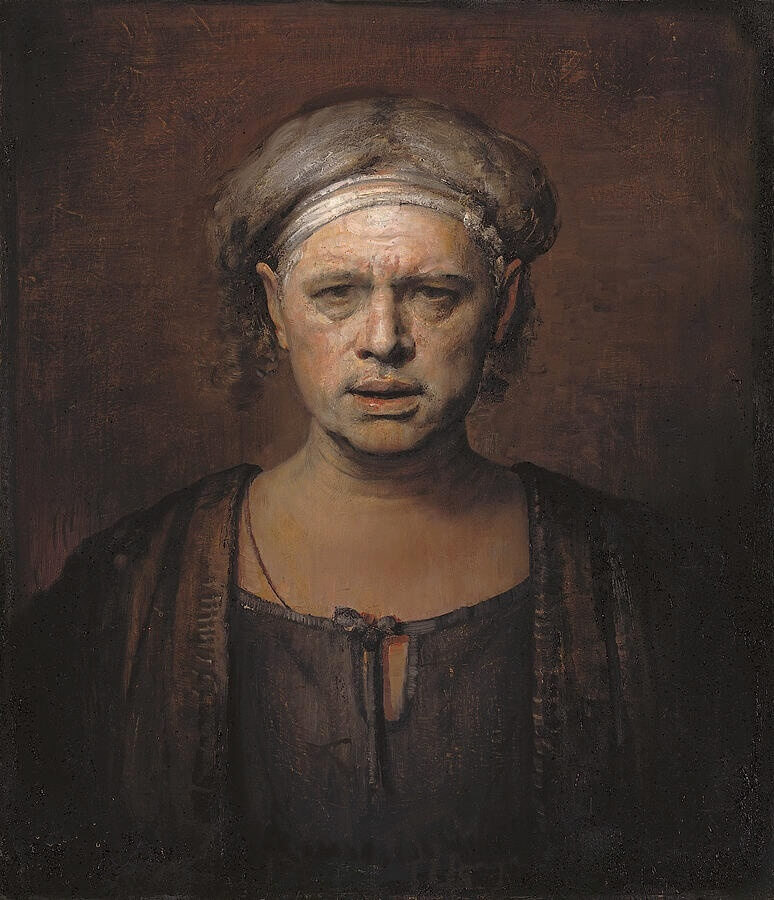


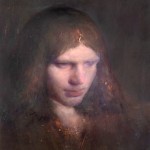
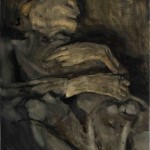
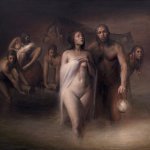
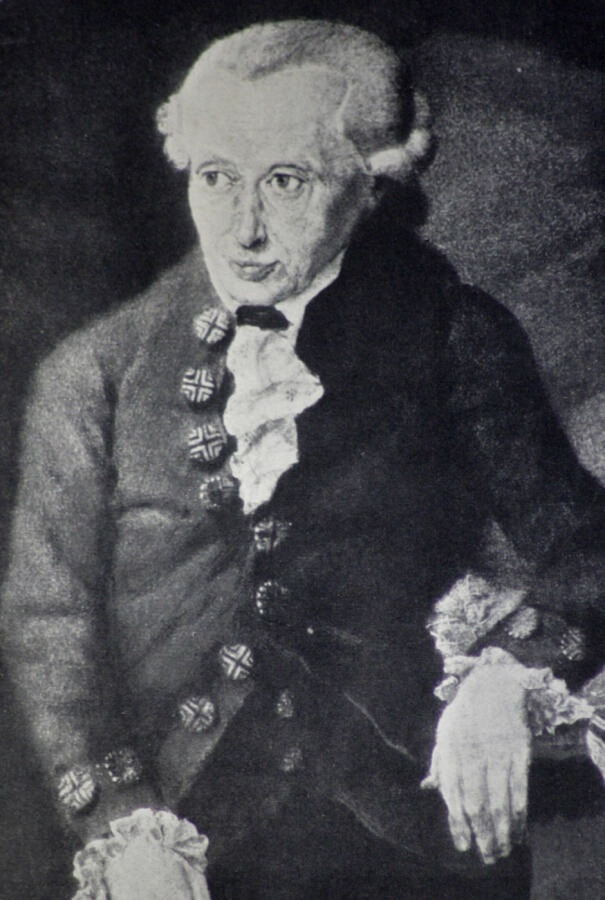
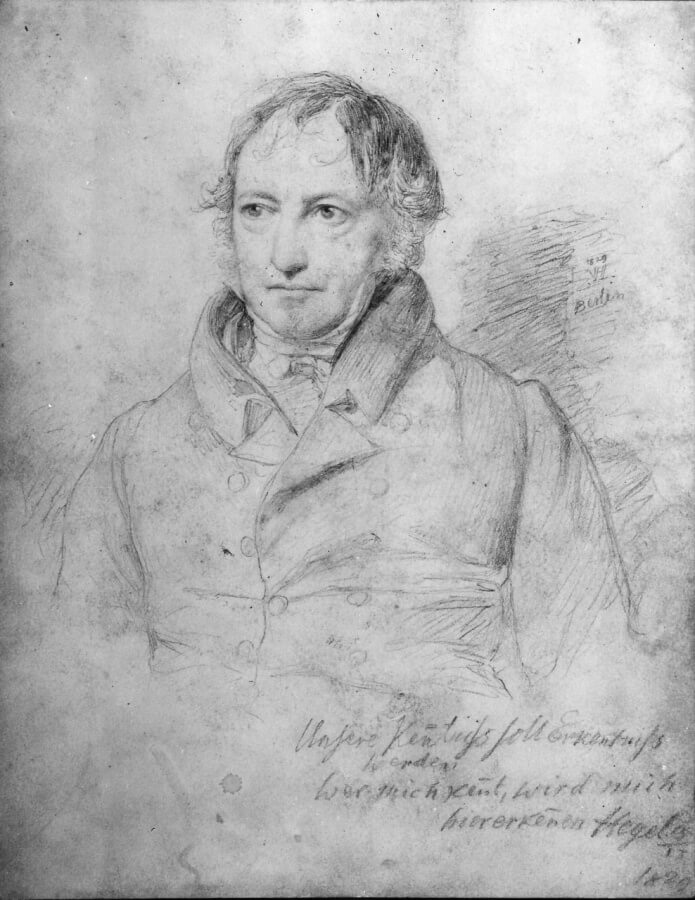
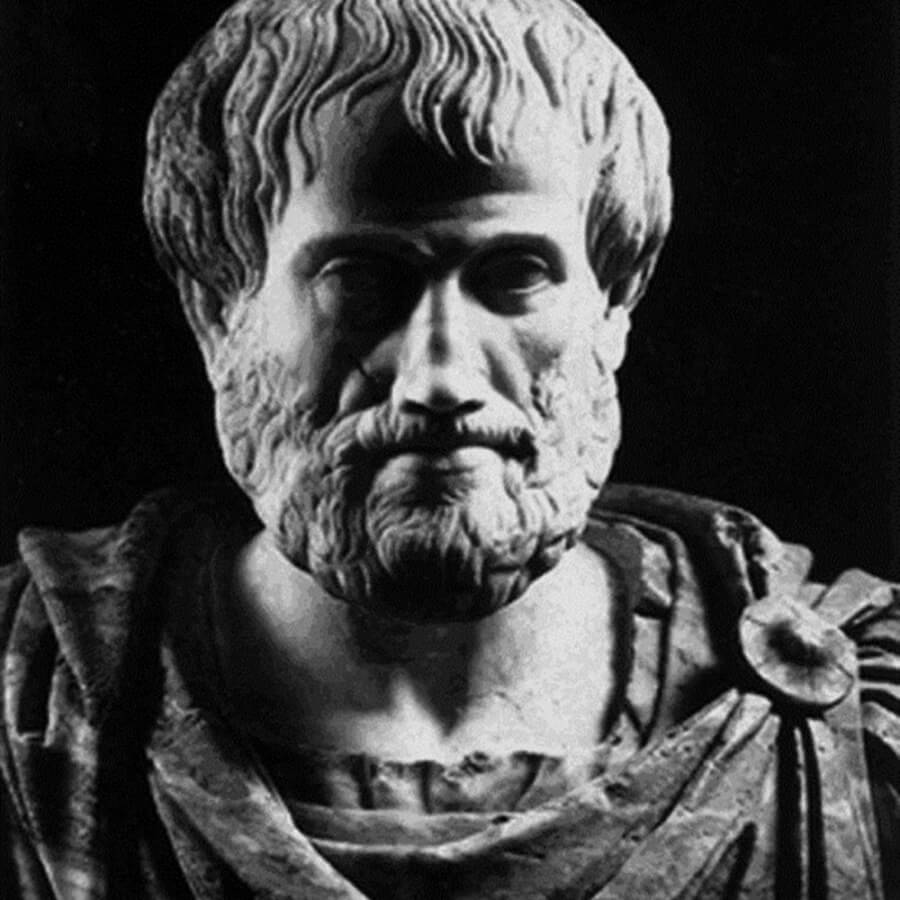
The Germanification of Europe would mean the exact opposite of what is here claimed.
That is, in its most recent expression, Germanification would mean National-Socialism winning, which was a synthesized return to the Germans’ biological, instinctual and racial philosophy, freed from their NON-German influences, i.e. Judaism and all its sources and derivatives (Christianism, Aristotelianism, Platonism, Gnosticism, etc.).
We need to make the world more RACIAL indeed, and less ABSTRACT, which for the Germans (by blood, which includes Scandinavia), would mean MORE German, not less. Advocating for suicide, or misrepresenting character, are both failures. Here you want to make the world less Judaic, NOT less Germanic, because Kant and Hegel are influenced (indirectly) by Judaism, and to its earliest roots, Semitism.
Judaism – as seen by Jews priding themselves on it but also Nietzsche and all who looked into them scientifically or historically – is the most prevalent and exacerbated representative of ABSTRACTION, in their morality, politics, science and even biology (higher verbal IQ with lower performance IQ).
We can see them to always thrive the best in such abstracted environment which they otherwise always sought to create – more than any other people – and this remained true throughout history where already then, the Semitic Sargon of Akkad abstracted Sumerian gods into stars or mixed males and females Gods into single abstract androgynous one (Inanna+Ishtar). This pattern is then repeated throughout Judaic history where they inverted high-ranking priestess fleewing the pleb into Moses’s mother a forced worker fleeing the Egyptian elite, or when Sumerians built temples so the gods may come down to bring gifts into the God punishing men for building the tower of Babel trying to reach him. All throughout the Semitic and then Judaic life history we see a reoccurring pattern of subversion, inversion, and abstraction. These were the necessary responding tactics which ensured their survival through time in their conditions the moment they became dominated and spread.
If your problem is Abstraction (ultra-rationalism, transcendentalism, idealism, etc.) which I do agree has huge drawbacks outside of its capacity to charm by appearing deep and to predict by generalizing the core, then you should look at the root of it all, which isn’t a Germanic problem, but a Judaic one (or Semitic one, if we draw at large).
This mentality and way of viewing and dealing with the world changes name and mutates over time and express itself through various means and sometimes individuals, such here as Kant or Hegel, but also Christians, Gnostics, or those who inspired Plato who traveled to the lands of Semites and brought back their ideas. Still to pinpoint accurately and most efficiently, this way will find its greatest, most developed and most potent expression in Judaism and its people.
My comment may have sounded a bit harsh on the students. I really do think very very highly of Odd as well as his going against the grain and revitalizing painting! And the students are ambitious and the community has a position. But I think some modern art is good too and that it should be considered. The unifying factor in art is not style but quality and depth and curiosity. When looking at the weeping woman 1937 by Picasso you truly see an archetype – an expression of being dissolved in grief and an image of femininity – this is all women. I think it is unconvincing to completely dismiss it. When looking at Frank Auerbach I also see a continuation of portraits and landscapes in a new and stimulating way and he is also a fan of Rembrandt. All the best
Thank you for an interesting article. I think that you Odd is a great and important painter and underrated by much of the public – but I think some of the thoughts expressed are a little too dogmatic. Let me explain. Odd has been rejected by the “art world” because they fear or don’t embrace powerful emotions, craft and sincerity. It often happens that great things are misunderstood in their own time.
Naturally the rejection of the “art world” make one defiant towards it. And for the most part it is totally correct. But I find it strange to make a stark division between who are good or bad artists based only on modern vs classical. For instance, I find both Van Gogh and Odd Nerdrum great – there is no conflict here. I think Van Gogh and Picasso might admire Odd if they were around, I don’t understand why Odd cannot recognize what is great in them? But maybe that is what it takes to stay committed and energized to one’s own work? If that is the case, fair enough… I think Odd is a good and very compassionate teacher and incredibly knowledgeable, but what he fails to see is that he himself is actually quite original. Original in his way of composing paintings and creating a special feeling. Original because he is working in the grand style of painting in this era of mediocrity. Even though he works within a tradition he still brings something new into the world. The art world is largely dumb and a lot of modern and especially “contemporary” art is rubbish – but this is not the same as ALL modern and contemporary art is rubbish.
I think it would be better to assess something based on whether it has quality of emotion rather than whether it is classical, original, modern or what not. Simply which works shine in a room? Which works will stand the test of time? Van Gogh and Michelangelo shine very differently but they are both great and so is Odd. The problem of these teachings is that even though Odds works are fantastic most of his students are with all respect far from his level(yet?) – and that has to do with the fact that Odd fought for the existence of his pictures and there is a strong will, ambition, craft and conviction in them – you feel that – a student can never achieve that without bringing something new or something from their own inner life to the table. The immediate followers of Rembrandt were not as great as Rembrandt simply because they came after him and redid rather than improve upon him. One has to fuse something distinct into the work. That can be attained by learning from the masters – but not from merely following one person. The young people that make self portraits with a completely borrowed feeling from Odd not truly resonating anything in themselves will not touch and be true.
I think the “school” and the too elaborate ideas of kitsch and the obviously inferior studentworks stain odds paintings more than shine light on them.
My point is basically that Van Gogh, Michelangelo, Lucian Freud, Rembrandt, Picasso and Odd Nerdrum has more in common than some bad realist painter who may claim to be sincere – one has to be able to feel quality. There are good and bad artist in all genres of music and I think Franz Lizt has more in common artistically with Art tatum, than some mediocre classical pianist.
I say all of this in the best of spirit – I truly think that the classical training and Odds teaching has more to offer than contemporary art schools – but a student/an artist must find their own way at some point, however subtle or different it may be from the tradition they work in.
WOW! I learned so much in this article. I know it’s quite old, but it never will age.
“If the German philosophers of the 18th and 19th century had not existed, then modernism would not have occurred either. Just as a lot of what we see around us today would not exist.”
So tired, so small, so worn.
It wasn’t the Germans that made Europe the garbage art capital of the world.
But keep telling yourself that. It’s safe.
Excellent!Congratulation Odd Nerdrum!
For years I have been looking at paintings by the people on your site, but also to paintings made by Gérard Daran (French), François Sasmayoux(French), Albert de Villeroux(Belgian), Sergio Ferro (PR) and others. If some of these works were presented to many scholars, they immediately drew comparisons to better known modern art – qualified by galleries. However, it seems to me that what you are writing above is changing bit by bit, as I see that in the gallery of Emmanuel Perrotin, some painters have gained a place that are working in classic techniques. So I am hopeful. It will be however a long time before the classic painter with all of his or her techniques will be recognised as prime art above a balloon dog by Koons who is really a kitsch maker in the true sense of the word. Not that his work does not have a worth in art history but of its absence of meaning and content. To me we are living in a period that has many parallels with the middle-ages! I explain myself: the times we are living in are extremely important on technical advancement and research (the case in the middle ages to), wars have torn the world apart from 1914 until now, but the arts are driven into a corner of the house we are living in. The written word is often misspelled in the newspapers, books are going out of the system and culture tends not to be taught or even abolished at schools at the moment I am writing this (e.g. what is happening now in the UK where history and art are to be taken out of the programs) A renaissance is coming, that I can feel, but will it be in the next decennium – I am not so sure. Let’s hope anyway.
While I am trying to remain hopeful in this situation, I wonder if the “dialogue” called for here is (a) possible or (b) productive in the sense that it would lead to some new “synthesis” out of the inevitable clash of profoundly differing world views (excuse the Hegelian reference). I also wonder of even some type of “peaceful co-existence” can in fact be “peaceful.” Modernism , the retail product of Germanic Idealism, is a destroyer.